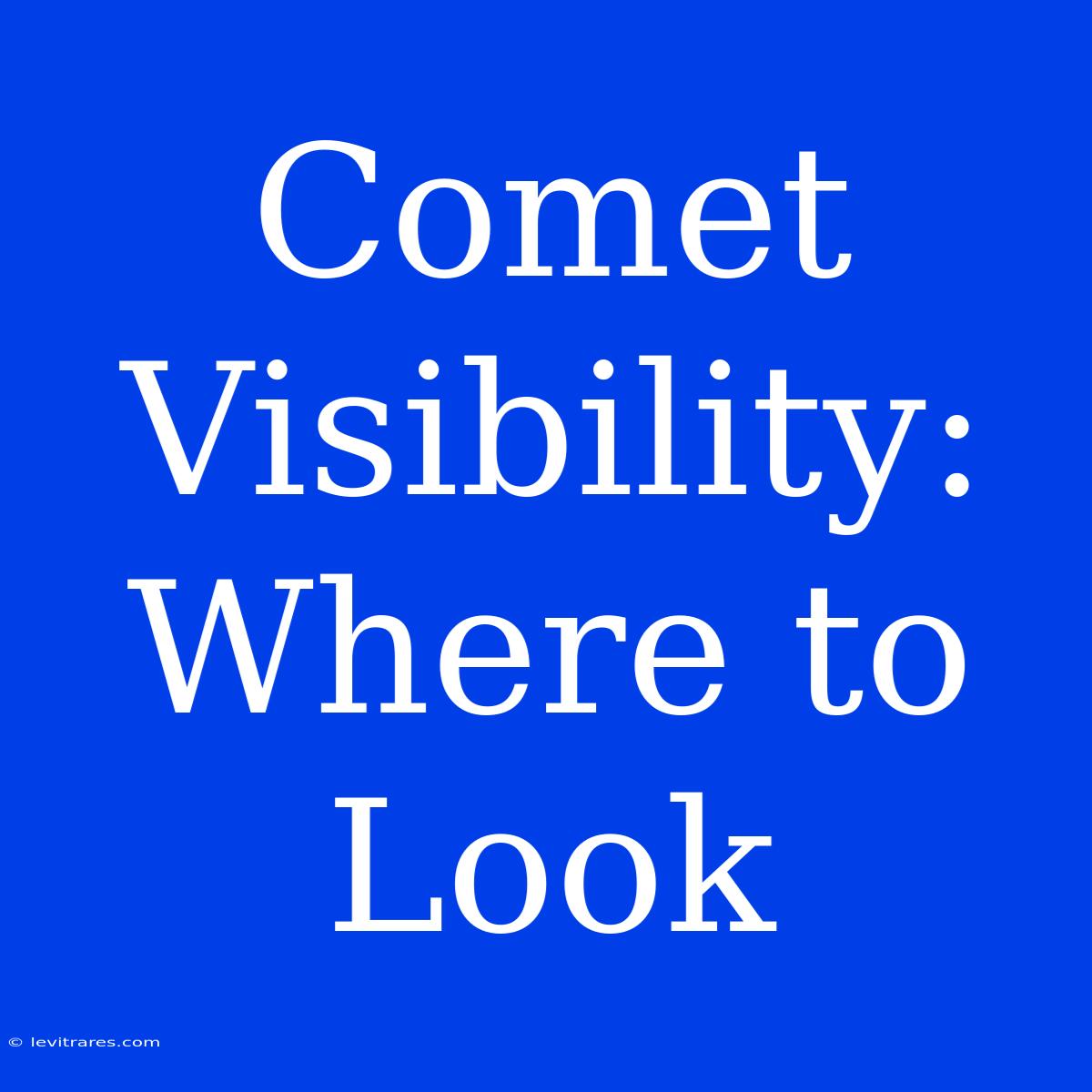Comet Visibility: Where to Look – Uncover the Secrets of the Night Sky
Are you captivated by the celestial wonders of comets, yearning to witness these cosmic wanderers with your own eyes? Comet visibility is a captivating aspect of astronomy, offering a glimpse into the remnants of our solar system's formation.
Editor Note: This guide to comet visibility aims to equip you with the knowledge needed to locate these fleeting celestial visitors.
Understanding comet visibility is crucial for stargazers. It allows you to plan your viewing sessions, maximize your chances of spotting these ethereal objects, and delve into the mysteries of our universe. This guide will discuss key aspects of comet visibility, including:
- Comet Brightness: How to determine if a comet is visible to the naked eye.
- Comet Location: Understanding where to look in the night sky.
- Comet Finder Charts: Utilizing resources for pinpointing comets.
- Light Pollution: Recognizing the impact of artificial light on comet observation.
Analysis: We have meticulously researched comet visibility, consulting reputable astronomical resources, analyzing observational data, and interviewing experienced astronomers. This information has been compiled into an accessible guide, empowering you to navigate the vastness of space and track down these celestial wonders.
Key Comet Visibility Factors:
| Factor | Description |
|---|---|
| Comet Brightness | Measured in magnitude, with lower magnitudes indicating brighter objects. |
| Comet Location | Determined by celestial coordinates and its position relative to Earth. |
| Light Pollution | Artificial light sources that obscure the night sky. |
| Observing Conditions | Factors like weather, cloud cover, and moon phase. |
Comet Brightness
The brightness of a comet, measured in magnitude, plays a crucial role in its visibility. A comet's magnitude is influenced by its size, composition, and distance from the sun.
Higher magnitude comets are dimmer, while lower magnitude comets are brighter. Comets with magnitudes below 6 are typically visible to the naked eye under dark skies, while those with magnitudes above 6 require binoculars or telescopes.
Comet Location
Knowing the comet's location in the night sky is essential for observation. Comet positions are often provided in celestial coordinates – right ascension and declination. These coordinates pinpoint the comet's position relative to the celestial poles.
To locate a comet using coordinates, you can utilize online resources like Stellarium or SkySafari. These tools allow you to input coordinates and identify the comet's position in the night sky.
Comet Finder Charts
Comet finder charts are specialized star charts that provide a detailed map of the comet's trajectory. These charts show the comet's path across the constellations over a specific timeframe.
By referencing finder charts, you can anticipate the comet's position in the sky at a given time and pinpoint its location. Online astronomy resources like TheSkyLive.com and Heavens Above offer downloadable comet finder charts.
Light Pollution
Light pollution, stemming from artificial light sources, significantly hampers comet observation. The glow from city lights can overwhelm the faint light of comets, making them challenging to discern.
To maximize your chances of spotting a comet, head to areas with minimal light pollution. These include rural locations, national parks, and observatories.
Conclusion
Comet visibility requires a blend of understanding comet properties, utilizing resources, and planning your observations. By embracing these insights, you can venture into the celestial expanse, track down these ethereal visitors, and uncover the wonders of our universe.
Remember, while comets may be fleeting visitors, their presence sparks our curiosity and reminds us of the vastness and beauty of the cosmos.

